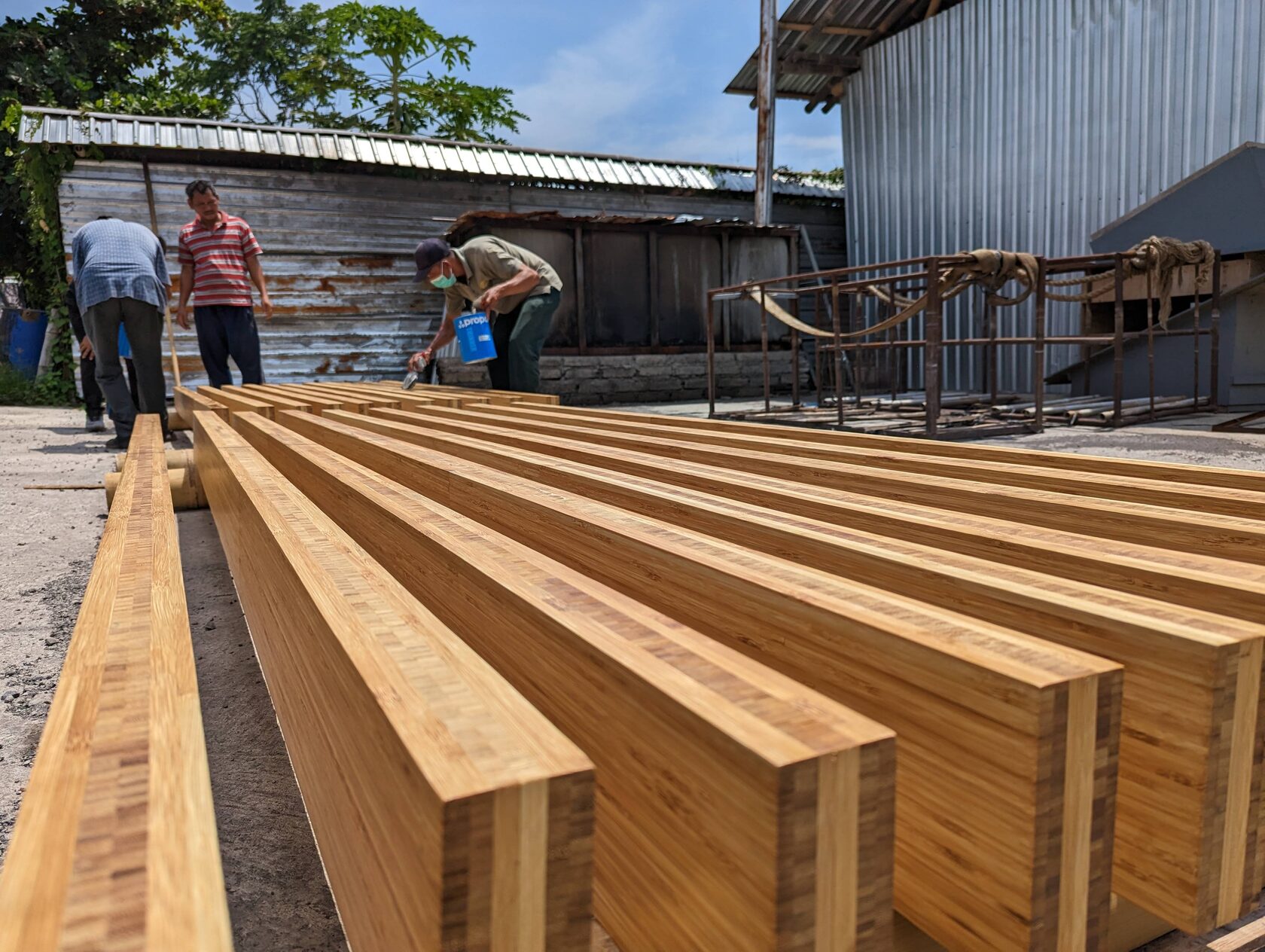Restoring Indonesia’s Degraded Lands with Bamboo - and Climate Data
By Lior Torenberg
August 22nd, 2025
Indonesia is home to an estimated 25+ million hectares of degraded, "sleeping" lands — former forests cleared through slash-and-burn agriculture, often by shifting agriculturists seeking short-term gain through fast-growing cash crops. In some areas, over 80% of the land has been degraded.
These same agriculturists, however, could become the stewards of a new restoration economy — if given the right incentives.
Indobamboo is developing a scalable and sustainable model for land restoration through bamboo-based agroforestry. Their approach offers farmers access to land for up to 105 years (35-year renewable terms), with legal protections and a pathway to long-term stewardship.
But the true challenge lies in building an entire ecosystem around this effort: stable value chains, consistent year-round work, and access to climate finance that protects communities from commodity shocks.
To combat this issue, Indobamboo developed a tri-layered agroforestry model — bamboo as a shallow-rooted crop, medium-rooted crops like coffee or cacao, and deep-rooted timber species — mimicking natural systems and maximizing productivity without monoculture.
But to unlock climate finance and scale this across the tropics, they needed credible, real-time carbon data.
Why CarbonSpace?
“The whole concept of CarbonSpace’s real-time understanding of carbon sequestration is huge,” said Arief Rabik, Director of Indobamboo. “On one hand, it’s a myth-buster because come up with astronomical numbers for carbon sequestration. On the other hand, some people are far too conservative in their estimates.”
“CarbonSpace tells you what is actually going on — not based on out-of-date methodologies or broad placeholders. No system is perfect but the real-time understanding of sequestration they offer is beautiful. It’s visual and it’s exactly what we needed to tell a story about what we’re doing.”
CarbonSpace provided Indobamboo with a real-time, spatially precise understanding of bamboo’s actual carbon sequestration. For Indobamboo, this kind of clarity wasn’t just scientifically useful — it was a communications tool, an investment de-risker, and a bridge to international climate finance.
“Our goal is to enable climate finance that truly supports the farmer — not high-fee, extractive brokers. CarbonSpace gives us the evidence to show that our model works.”
What was the impact?
In 2024, Indobamboo partnered with CarbonSpace on a project, covering a portion of their 180,000-hectare restoration potential in Indonesia. The pilot helped quantify the carbon impacts of their bamboo village units — each composed of up to seven cooperatives — and brought valuable insights into seasonal performance, especially during disruptions like the rainy season.
The data is already helping Indobamboo:
These same agriculturists, however, could become the stewards of a new restoration economy — if given the right incentives.
Indobamboo is developing a scalable and sustainable model for land restoration through bamboo-based agroforestry. Their approach offers farmers access to land for up to 105 years (35-year renewable terms), with legal protections and a pathway to long-term stewardship.
But the true challenge lies in building an entire ecosystem around this effort: stable value chains, consistent year-round work, and access to climate finance that protects communities from commodity shocks.
To combat this issue, Indobamboo developed a tri-layered agroforestry model — bamboo as a shallow-rooted crop, medium-rooted crops like coffee or cacao, and deep-rooted timber species — mimicking natural systems and maximizing productivity without monoculture.
But to unlock climate finance and scale this across the tropics, they needed credible, real-time carbon data.
Why CarbonSpace?
“The whole concept of CarbonSpace’s real-time understanding of carbon sequestration is huge,” said Arief Rabik, Director of Indobamboo. “On one hand, it’s a myth-buster because come up with astronomical numbers for carbon sequestration. On the other hand, some people are far too conservative in their estimates.”
“CarbonSpace tells you what is actually going on — not based on out-of-date methodologies or broad placeholders. No system is perfect but the real-time understanding of sequestration they offer is beautiful. It’s visual and it’s exactly what we needed to tell a story about what we’re doing.”
CarbonSpace provided Indobamboo with a real-time, spatially precise understanding of bamboo’s actual carbon sequestration. For Indobamboo, this kind of clarity wasn’t just scientifically useful — it was a communications tool, an investment de-risker, and a bridge to international climate finance.
“Our goal is to enable climate finance that truly supports the farmer — not high-fee, extractive brokers. CarbonSpace gives us the evidence to show that our model works.”
What was the impact?
In 2024, Indobamboo partnered with CarbonSpace on a project, covering a portion of their 180,000-hectare restoration potential in Indonesia. The pilot helped quantify the carbon impacts of their bamboo village units — each composed of up to seven cooperatives — and brought valuable insights into seasonal performance, especially during disruptions like the rainy season.
The data is already helping Indobamboo:
- Make the case for climate finance to support cash flow gaps for farmers
- Build trust with government and community stakeholders through transparent data
- Position themselves for biodiversity credits, with a plan to use CarbonSpace alongside other data streams
- Convene partners through efforts led by 1Tree.org, including potential investors from Gojek and Northstar Foundation
The Indobamboo Lestari – Bamboo Village Trust partnership will scale the use of bamboo-based carbon negative building products that are manufactured in Indonesia, while supporting rural landscape partners manage and restore degraded landscapes through bamboo.


